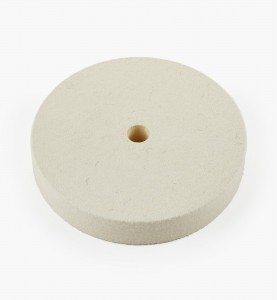The widespread adoption of wool felt wheels in various industries is not only transforming surface finishing processes but also having a significant impact on the skills required of the workforce and the associated training programs. These tools, with their unique characteristics and applications, are reshaping the way workers approach their tasks and the knowledge and expertise they need to possess.
Wool felt wheels demand a certain level of technical proficiency from operators. Understanding the different types of wool felt wheels, such as soft wool felt wheels for delicate polishing and coarse wool felt wheels for heavy – duty grinding, is essential. Workers need to be able to select the appropriate wheel for the specific material and task at hand, as well as know how to pair it with the right polishing compound. This requires a comprehensive understanding of material science and surface finishing techniques, which in turn calls for more in – depth training compared to using more basic tools.
In industries like precision engineering and aerospace, where the margin for error is extremely small, the training for using wool felt wheels becomes even more specialized. Operators must learn how to control the speed, pressure, and movement of the wool felt wheel with precision to achieve the desired surface finish without damaging the workpiece. This often involves hands – on training, where workers practice on sample materials under the guidance of experienced trainers. Additionally, with the integration of wool felt wheels into automated systems, workers also need to be trained in operating and maintaining these advanced machines, adding another layer of complexity to the skill set required.
However, the introduction of wool felt wheels also presents opportunities for upskilling the workforce. As companies invest in these advanced tools, they are increasingly providing training programs to help their employees develop the necessary skills. These training initiatives not only enhance the workers’ capabilities but also improve their job security and career prospects. For example, a worker who masters the art of using wool felt wheels in the jewelry industry may find themselves in high demand, with the potential to take on more complex and higher – paying projects.
Moreover, the use of wool felt wheels encourages a culture of continuous learning and improvement. Workers are constantly exposed to new techniques and applications of these wheels as industries evolve and new materials are introduced. This drives them to stay updated with the latest trends and technologies in surface finishing, fostering a more skilled and adaptable workforce.
As the role of wool felt wheels in industries continues to expand, the importance of proper workforce training and skills development will only increase. By investing in training programs and promoting a learning – centric work environment, companies can ensure that their employees are well – equipped to handle these tools, leading to improved productivity and better – quality products.

Post time: Jun-12-2025
